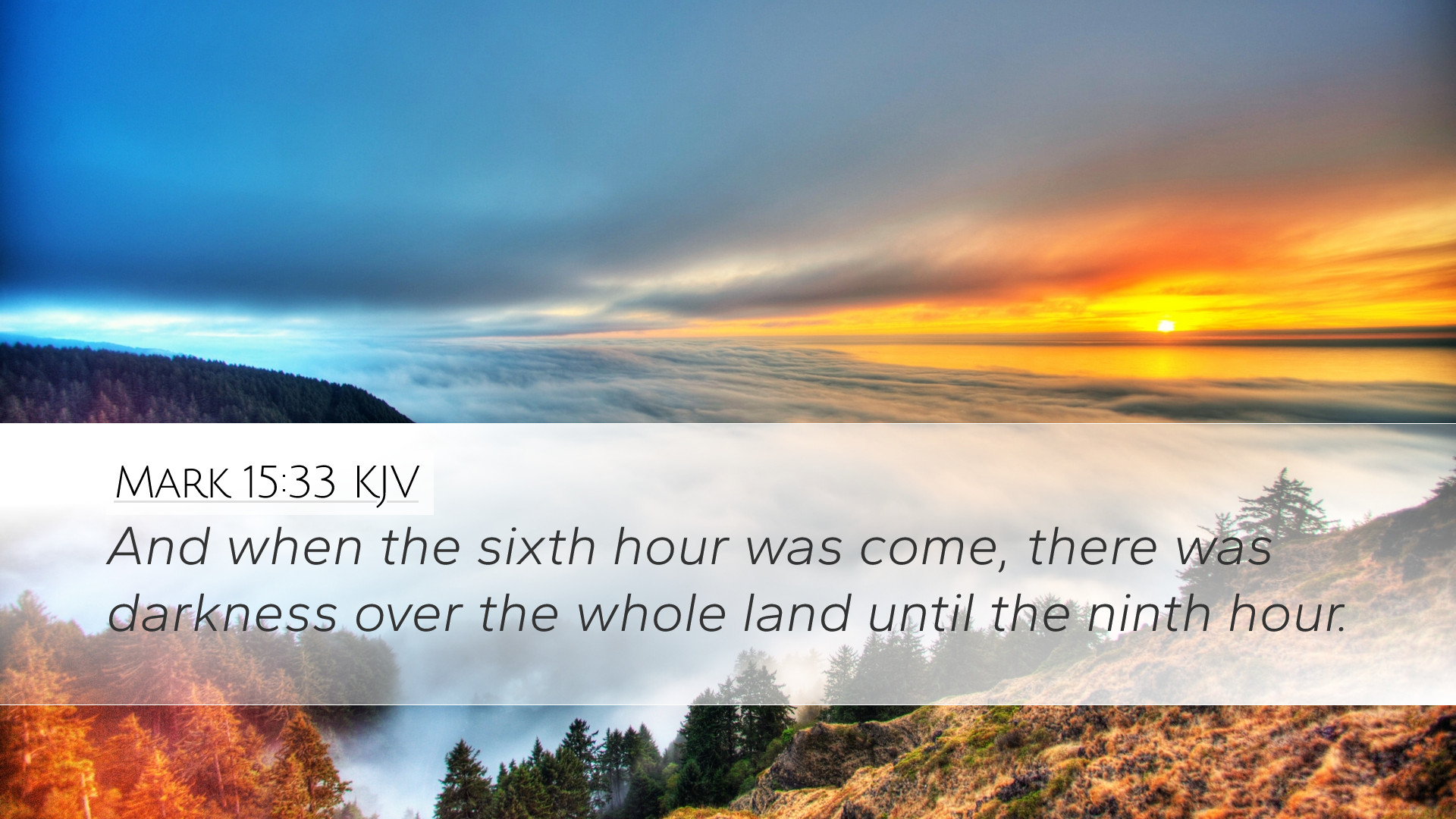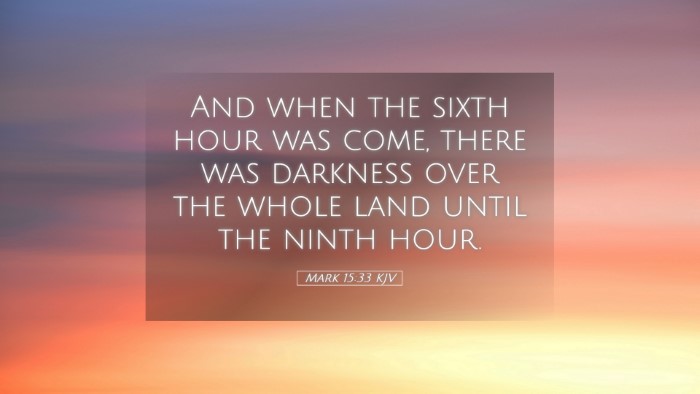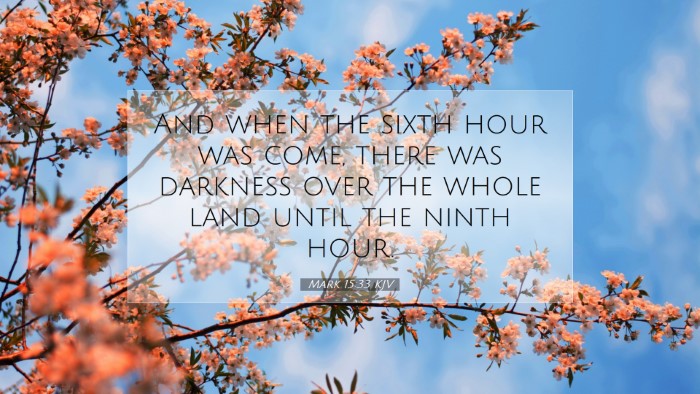Commentary on Mark 15:33
Verse Text: "And when the sixth hour had come, there was darkness over the whole land until the ninth hour."
Overview
This verse marks a significant moment during the crucifixion of Jesus Christ, specifically highlighting an extraordinary cosmic event that coincides with Christ's suffering. Various public domain commentaries provide deep insights into the implications of this darkness, its theological significance, and its connection to Old Testament prophecy.
Theological Significance of the Darkness
According to Matthew Henry, the darkness that enveloped the land during the Crucifixion represents a divine response to the sin and suffering that Jesus was bearing. Henry interprets this phenomenon as a manifestation of God’s displeasure with the grievous act of murdering His Son. The darkness symbolizes the weight of sin that Jesus took upon Himself, as well as the judgment that was falling upon the world due to human sinfulness.
Albert Barnes adds that this darkness was no ordinary occurrence; it was a supernatural event that reflected the significance of the moment. He argues that the darkness was both a sign of God's mourning for the death of His Son and a symbol for the spiritual blindness of the people who were crucifying Him. Barnes emphasizes that the physical darkness mirrored the moral darkness of human hearts turning away from the light.
Connection to Old Testament Prophecy
Adam Clarke refers to prophecies in the Old Testament that foreshadow such supernatural signs as a response to significant events in Israel's history. Clarke notes that the darkness at Jesus' crucifixion fulfills previous prophetic utterances about an impending calamity and divine intervention. He points out passages such as Amos 8:9, where God declares a day of darkness in judgment, thus linking Jesus' death with the prophetic tradition.
Historical Context
The setting of this event is crucial for understanding its implications. Jesus was crucified during Passover, a time filled with memorial significance for the Jewish people. Henry explains that the darkness was particularly poignant against the backdrop of the Passover lamb, which signified salvation. Just as the darkness fell during the judgment of Egypt (Exodus 10:21-23), a parallel is drawn with the spiritual judgment upon Israel for rejecting Jesus.
The Symbolism of Darkness
Darkness is a powerful biblical symbol. As noted by Barnes, it often represents death, sin, and separation from God. The Evangelists portrayed Jesus' crucifixion not only as a historical event but also as a theological occasion that drew cosmic implications. The three hours of darkness reflect the spiritual and physical burdens that Jesus bore as He experienced separation from God, which would later echo in His cry of abandonment.
The Impact on the Onlookers
This incident had profound effects on those who witnessed it. According to Clarke, the observers present at the foot of the cross would have found the darkness unsettling and mysterious. It would have forced them to reflect on the weight of the moment and the implications of their actions. The immediate atmosphere was heavy with grief and awe, and many must have felt unease as they recognized this was not a typical execution but a moment steeped in spiritual importance.
Spiritual Reflections
For pastors and theologians, this darkness serves as a platform for deep reflection on the nature of God’s sacrifice and the vastness of human sin. It reminds ministers that Christ's crucifixion was inherently tied to the human condition—the realities of suffering, sacrifice, and the necessity of grace. Matthew Henry prompts reflection on the depth of Christ's suffering, encouraging believers to see the darkness not simply as a physical event but as a representation of the spiritual bleakness from which Christ rescues humanity.
As students and scholars delve into this verse, they are invited to explore the interplay between light and darkness in Scripture. The transition from darkness during the crucifixion to the resurrection light represents the triumph of Christ over sin and death, offering profound implications for redemption and hope. Barnes and Clarke both highlight this transformation as they explore the resurrection narrative, asserting that the darkness was only a temporary veil leading to the ultimate victory of light over darkness.
Conclusion
Mark 15:33 is a pivotal moment in the Passion narrative that encapsulates the agony of Christ, the weight of sin, and the profound theological implications of the crucifixion. It serves as an invitation for believers to consider the depth of Christ's love and sacrifice, the seriousness of sin, and the hope of resurrection. The insights from Matthew Henry, Albert Barnes, and Adam Clarke converge powerfully to illuminate this moment as one of cosmic significance, encouraging all who study it to deepen their understanding of Christ's atoning work and its implications for faith and discipleship.


